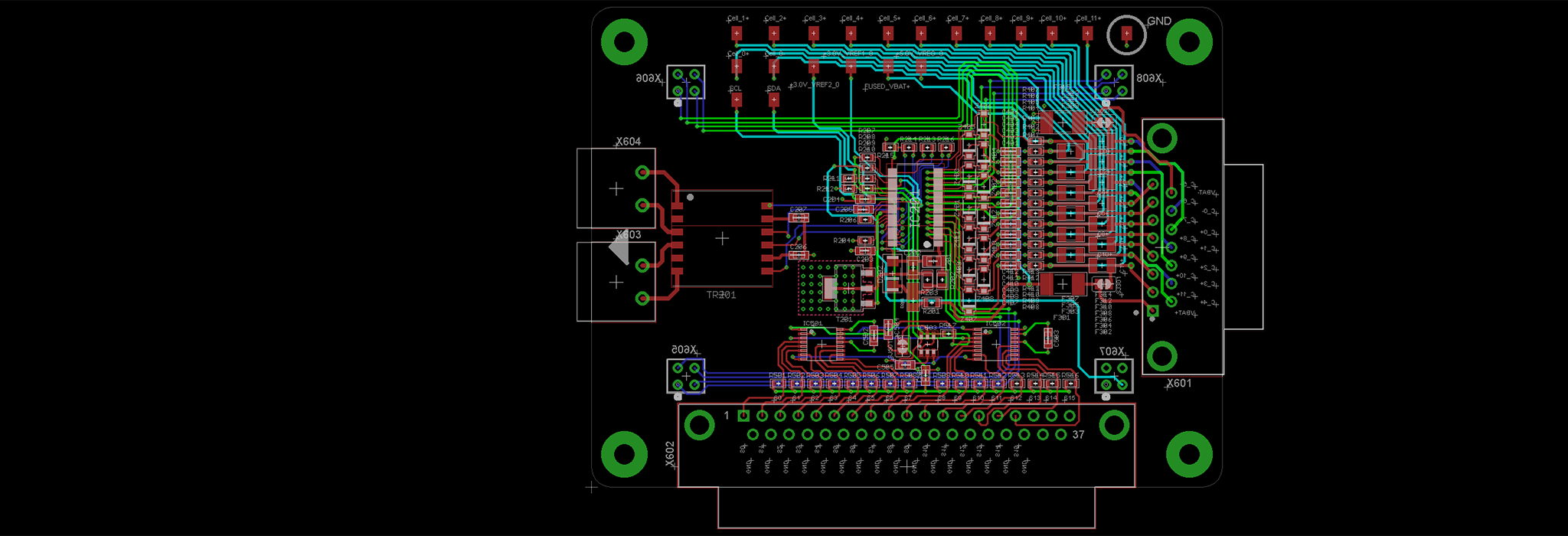Jahr
Year | Titel/Autor:in
Title/Author | Publikationstyp
Publication Type |
|---|
| 2025 |
Towards Sustainable Sulfide-based All-Solid-State-Batteries: An Experimental Investigation of the Challenges and Opportunities using Solid Electrolyte free Silicon Anodes
Neumann, Tobias; Dold, Lukas Alexander; Cerny, Alain Thomas; Tröster, Eric; Günthel, Michael; Fischer, Anna; Birke, Kai Peter; Krossing, Ingo; Biro, Daniel |
Zeitschriftenaufsatz
Journal Article
|
| 2025 |
Navigating the Challenges of Rechargeable Aluminum Battery Research: Material Instabilities, Technical Hurdles, and Future Directions
Fuentes-Mendoza, Eliana; Talari, Mahla; Zemlyanushin, Eugen; Córdoba, Rafael; Sabi, Noha; Dsoke, Sonia |
Review
|
| 2025 |
Dissolution of molybdenum current collector as Crucial and Undesired process in aluminum batteries
Zemlyanushin, Eugen; Schwarz, Björn; Dsoke, Sonia |
Zeitschriftenaufsatz
Journal Article
|
| 2025 |
Data Science Meets Battery Research: Integrating AI with Scanning Acoustic Microscopy for Quality Assurance
Djuric-Rissner, Tatjana; Rosenkranz, Christopher; Kroll, Moritz |
Vortrag
Presentation
|
| 2025 |
Entwicklungslinien Photovoltaik
Bett, Andreas W. |
Vortrag
Presentation
|
| 2025 |
Minimizing the Cobalt Content in LiNi0.8Mn0.1Co0.1O2 Cathode Material without Altering the Energetic Performances
EL Aouam, Abir; Sabi, Noha; Touag, Ouardia; Sarapulova, Angelina; Dsoke, Sonia; Dollé, Mickael; Saadoune, Ismael |
Zeitschriftenaufsatz
Journal Article
|
| 2025 |
New Insights to Electrolyte Design for Aqueous Zinc-Manganese Dioxide Batteries: The Role of Anion Complexes and pH Dynamics
Pross-Brakhage, Julia; Meyer, Jens; Mehlich, Christopher; Fitz, Oliver; Birke, Kai Peter |
Zeitschriftenaufsatz
Journal Article
|
| 2025 |
Exploring the possibility of aluminum plating/stripping from a non-corrosive Al(OTf)3-based electrolyte
Talari, Mahla; Sarapulova, Angelina; Zemlyanushin, Eugen; Sabi, Noha; Hofmann, Andreas; Trouillet, Vanessa; Dsoke, Sonia |
Zeitschriftenaufsatz
Journal Article
|
| 2025 |
Exploring the profitability of single and multi-use energy storage systems mirroring real-world conditions
Rohrer, Tobias; Reiners, Nils; Hogl, Ricarda |
Zeitschriftenaufsatz
Journal Article
|
| 2025 |
NiFe-NO3 Layered Double Hydroxide as a Novel Anode for Sodium Ion Batteries
Fortunato, Marco; Sarapulova, Angelina; Schwarz, Björn; Cardinale, Anna Maria; Dsoke, Sonia |
Zeitschriftenaufsatz
Journal Article
|
| 2025 |
Synthetic Data Generation for AI-Informed End-of-Line Testing for Lithium-Ion Battery Production
Krause, Tessa; Nusko, Daniel; Rittmann, Johannes; Pitta Bauermann, Luciana; Kroll, Moritz; Holly, Carlo |
Zeitschriftenaufsatz
Journal Article
|
| 2025 |
Cell and Battery Design - Batteries | Hardware
Milde, Waleri; Lux, Stephan |
Aufsatz in Buch
Book Article
|
| 2025 |
Comparison of Kalman filter and H-infinity filter for Battery State of Charge Estimation with a Detailed Validation Method
Milde, Waleri; Kerle, Laurin |
Zeitschriftenaufsatz
Journal Article
|
| 2024 |
Bedeutung von Großspeichern für die erneuerbare Stromversorgung
Vetter, Matthias |
Vortrag
Presentation
|
| 2024 |
Transition of the Energy System and the Impact of Photovoltaics
Bett, Andreas W. |
Vortrag
Presentation
|
| 2024 |
Statistical Models for Condition Monitoring and State of Health Estimation of Lithium-Ion Batteries for Ships
Vanem, Erik; Liang, Qin; Bruch, Maximilian; Bøthun, Gjermund; Bruvik, Katrine; Thorbjørnsen, Kristian; Bakdi, Azzeddine |
Zeitschriftenaufsatz
Journal Article
|
| 2024 |
Detection of thickness changes in compressed battery cells
Pitta Bauermann, Luciana |
Vortrag
Presentation
|
| 2024 |
Energy Harvesting and Storage with a High Voltage Organic Inorganic Photo-Battery for Internet of Things Applications
Büttner, Jan; Delgado Andrés, Rodrigo; Wessling, Robin; Wang, Yu; Esser, Birgit; Würfel, Uli; Fischer, Anna |
Zeitschriftenaufsatz
Journal Article
|
| 2024 |
Bridging Data Science and Battery Research Approaches for Enhanced Quality Investigation
Kroll, Moritz |
Vortrag
Presentation
|
| 2024 |
Physics-Informed Data-Driven Approaches to State of Health Prediction of Maritime Battery Systems
Bakdi, Azzeddine; Bruch, Maximilian; Liang, Qin; Vanem, Erik |
Konferenzbeitrag
Conference Paper
|
| 2024 |
Photovoltaik und Batteriespeicher. Ein Tandem, das die Energiewende voranbringt
Bett, Andreas W. |
Vortrag
Presentation
|
| 2024 |
Roadmap on multivalent batteries
Palacín, Rosa; Johansson, Patrik; Dominko, Robert; Dlugatch, Ben; Aurbach, Doron; Li, Zhenyou; Fichtner, Maximilian P.; Lužanin, Olivera; Bitenc, Jan; Wei, Zhixuan; Glaser, Clarissa; Janek, Jürgen; Fernández-Barquín, Ana; Mainar, Aroa R.; Leonet, Olatz; Urdampilleta, Idoia; Blázquez, José Alberto; Tchitchekova, Deyana S.; Ponrouch, Alexandre; Canepa, Pieremanuele; Sai Gautam, G.; Casilda, Raúl San Román Gallego; Martínez-Cisneros, Cynthia S.; Torres, Nieves Ureña; Várez, Alejandro; Sanchez, Jean Yves; Kravchyk, K. V.; Kovalenko, Maksym V.; Teck, Anastasia A.; Shiel, Huw; Stephens, Ifan E.L.; Ryan, Mary P.; Zemlyanushin, Eugen; Dsoke, Sonia; Grieco, Rebecca; Patil, Nagaraj; Marcilla, Rebeca; Gao, Xuan; Carmalt, Claire J.; He, Guanjie; Titirici, Magdalena M. |
Review
|
| 2024 |
Controlled Hydrogen Loading of Magnesium Thin Films in KOH - Effects on the Hydride Nucleation and Growth Regimes
Guardi, Giorgia; Sarapulova, Angelina; Dsoke, Sonia; Wagner, Stefan; Pasquini, Luca; Pundt, Astrid |
Zeitschriftenaufsatz
Journal Article
|
| 2024 |
NRGISE - Python Simulation Framework for Energy Storage Systems
Rohrer, Tobias; Reiners, Nils; Hogl, Ricarda |
Vortrag
Presentation
|
| 2024 |
Correlation between Voltage, Strain, and Impedance as a Function of Pressure of a Nickel-Rich NMC Lithium-Ion Pouch Cell
Laufen, Hendrik; Berg, Sascha; Engeser, Julian; Strautmann, Maya; Koprivc, Aleksander; Rahe, Christiane; Figgemeier, Egbert; Sauer, Dirk Uwe |
Zeitschriftenaufsatz
Journal Article
|
| 2024 |
Modeling Battery Aging for Optimal Control
Hogl, Ricarda; Groß, Arne; Harzer, Jakob; Reiners, Nils; Diehl, Moritz |
Konferenzbeitrag
Conference Paper
|
| 2024 |
Investigating requirements on mini-environments for ultra-low dewpoint applications
Leisner, Simon; Kissling, Marc; Auerswald, Sven; Li, Ziyue; Heller, Marius |
Poster
|
| 2024 |
π-Conjugated Metal Free Porphyrin as Organic Cathode for Aluminum Batteries
Chowdhury, Shagor; Sabi, Noha; Córdoba Rojano, Rafael; Le Breton, Nolwenn; Boudalis, Athanassios K.; Klayatskaya, Svetlana; Dsoke, Sonia; Ruben, Mario |
Zeitschriftenaufsatz
Journal Article
|
| 2024 |
Constructing Hollow Microcubes SnS2 as Negative Electrode for Sodium-ion and Potassium-ion Batteries
Li, Chengping; Yu, Hongrui; Dong, Peng; Wang, Ding; Zeng, Xiaoyuan; Wang, Jinson; Zhang, Zhengfu; Zhang, Yingjie; Sarapulova, Angelina; Luo, Xianlin; Pfeifer, Kristina; Ehrenberg, Helmut; Dsoke, Sonia |
Zeitschriftenaufsatz
Journal Article
|
| 2024 |
Comparing Crush Safety of Different Battery Chemistry
Heuer, Adrian; Kroll, Moritz; Thiemann, Johannes; Günter, Luca; Denzer, Felix |
Vortrag
Presentation
|
| 2024 |
Investigation of Polyacrylonitrile-Derived Multiple Carbon Shell Composites for Silicon-Based Anodes in Lithium-Ion Batteries
Dold, Lukas Alexander; Bapat, Chinmay Rajeev; Gentischer, Harald; Ortlieb, Niklas; Fischer, Anna; Birke, Kai Peter; Biro, Daniel |
Zeitschriftenaufsatz
Journal Article
|
| 2024 |
Effect of Presodiation Additive on Structural and Interfacial Stability of Hard Carbon | P2-Na0.66Mn0.75Ni0.2Mg0.05O2 Full Cell
Sbrascini, Leonardo; Sarapulova, Angelina; Gauckler, Cornelius; Gehrlein, Lydia; Jeschull, Fabian; Akçay, Tolga; Mönig, Reiner; Marinaro, Mario; Nobili, Francesco; Dsoke, Sonia |
Zeitschriftenaufsatz
Journal Article
|
| 2024 |
Side-Reactions of Polyvinylidene Fluoride and Polyvinylidene Chloride Binders with Aluminum Chloride-Based Ionic Liquid Electrolyte in Rechargeable Aluminum-Batteries
Zemlyanushin, Eugen; Lykka Müller, Annika; Tsuda, Tetsuya; Dsoke, Sonia |
Zeitschriftenaufsatz
Journal Article
|
| 2024 |
BMS with Extended Communication for Battery Model Improvement
Milde, Waleri |
Vortrag
Presentation
|
| 2024 |
Methods for quantifying expansion in lithium-ion battery cells resulting from cycling: A review
Krause, Tessa; Nusko, Daniel; Pitta Bauermann, Luciana; Vetter, Matthias; Schäfer, Marcel; Holly, Carlo |
Zeitschriftenaufsatz
Journal Article
|
| 2023 |
Locally provoked cell aging using different pressure profiles at 60% DOD
Engeser, Julian; Bedadur, Prachiti; Berg, Sascha; Laufen, Hendrik; Heuer, Adrian; Figgemeier, Egbert; Pitta Bauermann, Luciana; Vetter, Matthias |
Poster
|
| 2023 |
Post-Lithium Batteries with Zinc for the Energy Transition
Pross-Brakhage, Julia; Fitz, Oliver; Bischoff, Christian; Biro, Daniel; Birke, Kai Peter |
Zeitschriftenaufsatz
Journal Article
|
| 2023 |
Transformation of Germany’s energy system in the context of the EU Green Deal targets
Henning, Hans-Martin |
Vortrag
Presentation
|
| 2023 |
Die Photovoltaik in Erneuerbaren Energiesystemen und aktuelle Forschungsergebnisse
Bett, Andreas W. |
Vortrag
Presentation
|
| 2023 |
Scientific Testing of Battery Cells and Systems: Insights from Comprehensive Laboratory Investigations
Kroll, Moritz |
Vortrag
Presentation
|
| 2023 |
PV Battery Power Plants in Europe Status, Trends and Potentials
Vetter, Matthias; Heimsath, Anna; Lorenz, Elke; Wille-Haußmann, Bernhard |
Vortrag
Presentation
|
| 2023 |
Battery System modeling for SOH estimation - Analysis of battery aging and its impact
Bruch, Maximilian |
Vortrag
Presentation
|
| 2023 |
Stationary Battery Storage - From Small-scale Residential up to Utility-scale Applications
Vetter, Matthias |
Vortrag
Presentation
|
| 2023 |
Nachhaltige Photovoltaik-Produktion in Europa - Jetzt die Chancen ergreifen
Bett, Andreas W. |
Vortrag
Presentation
|
| 2023 |
R&D and Innovations for Photovoltaics
Bett, Andreas W. |
Vortrag
Presentation
|
| 2023 |
Crush Tests on Lithium Ion Battery Cells: Identifying Critical Force for Thermal Runaway and Ensuring Transportation Safety
Kroll, Moritz; Thiemann, Johannes |
Vortrag
Presentation
|
| 2023 |
First steps using Soft X-Ray Emission Spectroscopy for lithiated Silicon-based Anodes
Eisele, Lea |
Vortrag
Presentation
|
| 2023 |
Entwicklung einer Zink-Ionen-Batteriezelltechnologie mit wässrigen Elektrolyten für stationäre Anwendungen
Fitz, Oliver |
Dissertation
Doctoral Thesis
|
| 2023 |
Extending the Remaining Useful Lifetime of EV Batteries in Stationary Second-Life Applications
Vetter, Matthias |
Vortrag
Presentation
|
| 2023 |
Single-sided Laser Bonding for Battery Cells
Schiller, Christian H.; Hasenfratz, Andreas; Oesterwind, Roman |
Vortrag
Presentation
|
| 2023 |
Spatially resolved and non-contact detection of mechanical changes in battery cells during cycling
Pitta Bauermann, Luciana |
Vortrag
Presentation
|
| 2023 |
Elektromobilität in Mehrfamilienhäusern durch intelligente Ladestationen mit 2nd life Batteriespeicher
Vetter, Matthias |
Vortrag
Presentation
|
| 2023 |
Genetic algorithm optimization for parametrization, digital twinning, and now-casting of unknown small- and medium-scale PV systems based only on on-site measured data
Guzman Razo, Dorian Esteban; Madsen, Henrik; Wittwer, Christof |
Zeitschriftenaufsatz
Journal Article
|
| 2023 |
Impuls Photovoltaik: Im Energiesystem und Produktion
Bett, Andreas W. |
Vortrag
Presentation
|
| 2023 |
Introducing a Concept for Designing an Aqueous Electrolyte with pH Buffer Properties for Zn-MnO2 Batteries with Mn2+/MnO2 Deposition/Dissolution
Fitz, Oliver; Wagner, Florian; Pross-Brakhage, Julia; Bauer, Manuel; Gentischer, Harald; Birke, Kai Peter; Biro, Daniel |
Zeitschriftenaufsatz
Journal Article
|
| 2023 |
Sicherheitsprüfungen, Abusetests und Charakterisierung der Performance von Lithium-Ionen Akkumulatoren
Engeser, Julian; Kroll, Moritz; Heuer, Adrian; Berg, Sascha; Laufen, Hendrik; Figgemeier, Egbert |
Vortrag
Presentation
|
| 2023 |
Solare Kühlung und Trocknung von Fischen in Kenia
Fischer, Matthias; Esper, Albert; Pfanner, Norbert; Morgenstern, Alexander |
Zeitschriftenaufsatz
Journal Article
|
| 2023 |
Photovoltaics - from the Origins of Fraunhofer Institute for Solar Energy Systems to the Present Day
Bett, Andreas W. |
Vortrag
Presentation
|
| 2023 |
Crush Tests on Lithium Ion Battery Cells: Identifying Critical Force for Thermal Runaway and Safety in Transportation
Heuer, Adrian; Kroll, Moritz |
Vortrag
Presentation
|
| 2023 |
Nondestructive Defect Detection in Battery Pouch Cells: A Comparative Study of Scanning Acoustic Microscopy and X-Ray Computed Tomography
Pitta Bauermann, Luciana; Münch, Johannes; Kroll, Moritz; Enghardt, Stefan; Vetter, Matthias |
Zeitschriftenaufsatz
Journal Article
|
| 2023 |
Demonstrating Clean Energy Transition Scenarios in Sector-Coupled and Renewable-Based Energy Communities
Maruf, Md Nasimul Islam; Mahmud, Shadman; Pasarín, Iván S.; Giani, Federico; Degrave, Aurélien; Guerra, Carlos Funez; Lopez, Susana; Mesonero, Ivan |
Zeitschriftenaufsatz
Journal Article
|
| 2023 |
Data-driven snapshot methods leveraging data fusion to estimate state of health for maritime battery systems
Vanem, Erik; Bruch, Maximilian; Liang, Qin; Thorbjørnsen, Kristian; Valøen, Lars Ole; Alnes, Øystein Åsheim |
Zeitschriftenaufsatz
Journal Article
|
| 2023 |
Raman spectrometry measurements for the 2D mapping of the degradation products on aged graphite anodes of cylindrical Li-ion battery cells
Jabri, Slaheddine; Pitta Bauermann, Luciana; Vetter, Matthias |
Zeitschriftenaufsatz
Journal Article
|
| 2023 |
MARTERA - DDD-BATMAN. Data-Driven Degradation Monitoring and Prediction of Batteries for Maritime Applications
Grendze, Vanessa; Bruch, Maximilian |
Konferenzbeitrag
Conference Paper
|
| 2023 |
Battery Storage - Key Enabler for Large-Scale Integration of Renewable Energies
Vetter, Matthias |
Vortrag
Presentation
|
| 2023 |
Data-Driven Approaches to Diagnostics and State of Health Monitoring of Maritime Battery Systems
Vanem, Erik; Liang, Qin; Ferreira, Carla; Agrell, Christian; Karandikar, Nikita; Wang, Shuai; Bruch, Maximilian; Salucci, Bertinelli; Grindheim, Christian; Kejvalova, Anna; Alnes, Øystein Åsheim; Thorbjørnsen, Kristian; Bakdi, Azzeddine; Kandepu, Rambabu |
Konferenzbeitrag
Conference Paper
|
| 2023 |
Behind-the-Meter PV Battery Systems
Vetter, Matthias |
Vortrag
Presentation
|
| 2023 |
Integration Of C&I Battery Storage In Heavily Loaded Distribution Grids
Vetter, Matthias |
Vortrag
Presentation
|
| 2023 |
Producing the goods
Morgenstern, Alexander; Pfanner, Norbert |
Zeitschriftenaufsatz
Journal Article
|
| 2022 |
Von der Charakterisierung einer Batteriezelle bis zur Simulation eines Batteriemoduls
Hirschburger, Yannic |
Vortrag
Presentation
|
| 2022 |
The Promise Towards Terawatt Photovoltaics
Bett, Andreas W. |
Vortrag
Presentation
|
| 2022 |
Scanning Acoustic Microscopy as a Non-Destructive Tool for the Localization of Defects Inside Pouch Cell Batteries
Münch, Johannes |
Vortrag
Presentation
|
| 2022 |
Auf dem Weg zum Energiesystem Deutschland 2045 - Technologien, Systemfragen, Transformationspfade
Henning, Hans-Martin |
Vortrag
Presentation
|
| 2022 |
Simulative Investigation of Measures to Prevent Thermal Runaway Propagation in Li-Ion-Battery Modules
Gamisch, Sebastian |
Vortrag
Presentation
|
| 2022 |
Energietechnologien der Zukunft - mit Technologiesouveränität zur Energiesouveränität
Henning, Hans-Martin |
Vortrag
Presentation
|
| 2022 |
Fire Safety in PV and Battery Systems
Kulenkampff, Felix; Schmidt, Heribert |
Vortrag
Presentation
|
| 2022 |
Influence of fillers on performance of molten salt thermocline storage
Weiss, Julius; Wagner, Nils; Aprea, Vincenzo; Haas, Fridolin; Fluri, Thomas |
Konferenzbeitrag
Conference Paper
|
| 2022 |
Herausforderung Energiewende - Was muss getan werden?
Bett, Andreas W. |
Vortrag
Presentation
|
| 2022 |
Characterization of Aged Electrodes of Lithium-Ion-Battery
Jabri, Slaheddine |
Vortrag
Presentation
|
| 2022 |
Warum wir eine europäische PV-Industrie brauchen und wie das gehen könnte
Bett, Andreas W. |
Vortrag
Presentation
|
| 2022 |
Simulationsgestützte Optimierung des Batterieverschaltungsprozesses
Beinert, Andreas; Romer, Pascal; Hirschburger, Yannic |
Vortrag
Presentation
|
| 2022 |
Rechargeable lithium-ion battery systems
Vetter, Matthias; Lux, Stephan |
Aufsatz in Buch
Book Article
|
| 2022 |
Resolution Challenges Measuring Local Thermal Inhomogeneities of Lithium-Ion Pouch Cells. A feasibility study for localizing thermal related aging processes
Engeser, Julian |
Vortrag
Presentation
|
| 2022 |
Battery Cell Characterization Using Thickness Measurements
Pitta Bauermann, Luciana |
Vortrag
Presentation
|
| 2022 |
Integration of Second-Life Batteries as Buffer Storage in Apartment Buildings
Vetter, Matthias; Bruch, Maximilian; Kevlishvili, Nina; Reiners, Nils |
Vortrag
Presentation
|
| 2022 |
Research on High-Efficiency Tandem Solar Cells on Silicon at Fraunhofer ISE
Bett, Andreas W. |
Vortrag
Presentation
|
| 2022 |
Stationary battery storage for successful energy transition applications, developments and challenges
Vetter, Matthias |
Vortrag
Presentation
|
| 2022 |
Development and Analysis of an Off-grid Solar Food Processing System in Kenya
Morgenstern, Alexander; Subasi, Dilara Maria; Pfanner, Norbert; Reiners, Nils; Stortz, Felix; Wüllner, Johannes; Maruf, Md Nasimul Islam |
Konferenzbeitrag
Conference Paper
|
| 2022 |
Innovation Region Fessenheim Green Batteries and Circular Economy
Vetter, Matthias |
Vortrag
Presentation
|
| 2022 |
Webinar "Gibt es das saubere Modul" - Stand der Technik
Bett, Alexander J. |
Vortrag
Presentation
|
| 2022 |
The Major C&I Storage Applications for Germany - Results from a Survey and Exemplary Installations
Vetter, Matthias |
Vortrag
Presentation
|
| 2022 |
Herausforderungen bei der Energiewende
Bett, Andreas W. |
Vortrag
Presentation
|
| 2022 |
Photovoltaic will Power the World
Bett, Andreas W. |
Vortrag
Presentation
|
| 2021 |
OrtOptZelle - Position dependent compression of pouch cells for lifetime expansion
Engeser, Julian; Berg, Sascha; Frie, Fabian; Heuer, Adrian; Figgemeier, Egbert; Pitta Bauermann, Luciana; Vetter, Matthias |
Poster
|
| 2021 |
The role of batteries in meeting the PV terawatt challenge
Peters, I.M.; Breyer, C.; Jaffer, S.A.; Kurtz, S.; Reindl, T.; Sinton, Ronald A.; Vetter, Matthias |
Zeitschriftenaufsatz
Journal Article
|
| 2021 |
Report zur Batterieverschaltung Materialien - Technologien - Marktsituation. White Paper
Schiller, Christian; Kraft, Achim |
Paper
|
| 2020 |
Revealing the Local pH Value Changes of Acidic Aqueous Zinc Ion Batteries with a Manganese Dioxide Electrode during Cycling
Bischoff, Christian; Burns, Jordan; Fitz, Oliver; Bauer, Manuel; Birke, Kai Peter; Gentischer, Harald; Henning, Hans-Martin; Biro, Daniel |
Zeitschriftenaufsatz
Journal Article
|














